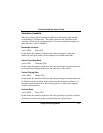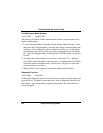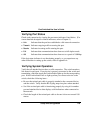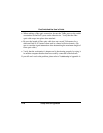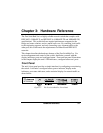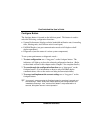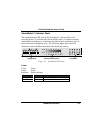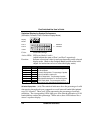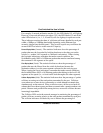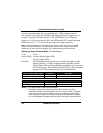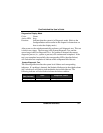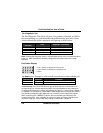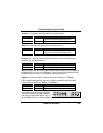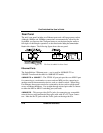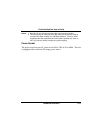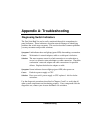
Fast SwitcHub-2se User’s Guide
Hardware Reference 3-5
For example, if network utilization reaches 1%, the LED labeled 1% will light up.
However, if network utilization rises above 35%, the LED labeled 35 and all the
other LEDs before it (i.e., 1, 5, 10 and 20) will also light up in rapid succession.
These indicators monitor the share of valid network frames handled by each port
within a 10Mbps or 100Mbps bandwidth, depending on the Ethernet type
currently plugged into the back panel. They provide a quick way to monitor the
current traffic load relative to the network’s capacity.
Forward Display Mode (Forward%) - The statistical indicators show the percentage of
packets that must be forwarded by bridging hardware to the other port on the
switch (i.e., another LAN segment or connected workstation). When viewing
the
Forward% indications, remember that under normal conditions, the
SwitcHub forwards 100% of all Ethernet packets that must be transferred among
the connected LAN segments at line speed.
Filter Display Mode (Filter%)- The statistical indicators show the percentage of
packets that must be filtered from the switch by hardware because the
destination address is on the same segment connected to the receiving port.
When viewing the
Filter% indications, remember that under normal conditions,
the SwitcHub filters 100% of all Ethernet packets that belong to the local LAN
segments at line speed (i.e., no local traffic leaks through to the other segment).
Collision Display Mode (Coll%)- The statistical indicators show the percentage of packet
collisions occurring out of the total packets transmitted by the port. Collisions
occur when two or more devices connected to a switch attempt to transmit data
simultaneously on the network. When a collision occurs, devices use a back-off
scheme that forces them to pause and then re-transmit after a pseudo-random wait
period. Because wait periods differ among devices, successive collisions become
increasingly improbable.
The Collision LEDs assist the network manager in monitoring the percentage of
packet collisions occurring relative to the total packets transmitted by each port.
The collision indicators are labeled by row to indicate the percentage of



